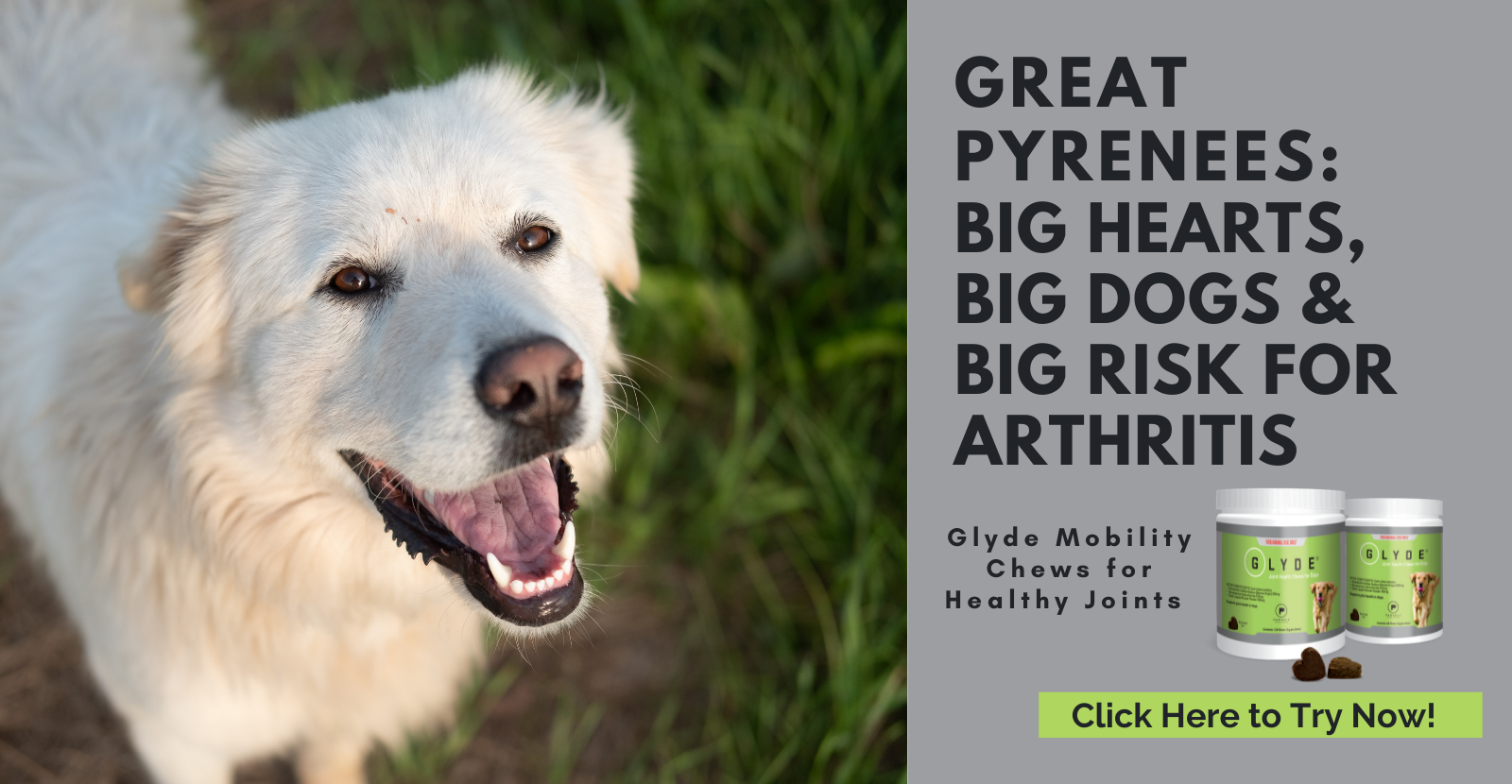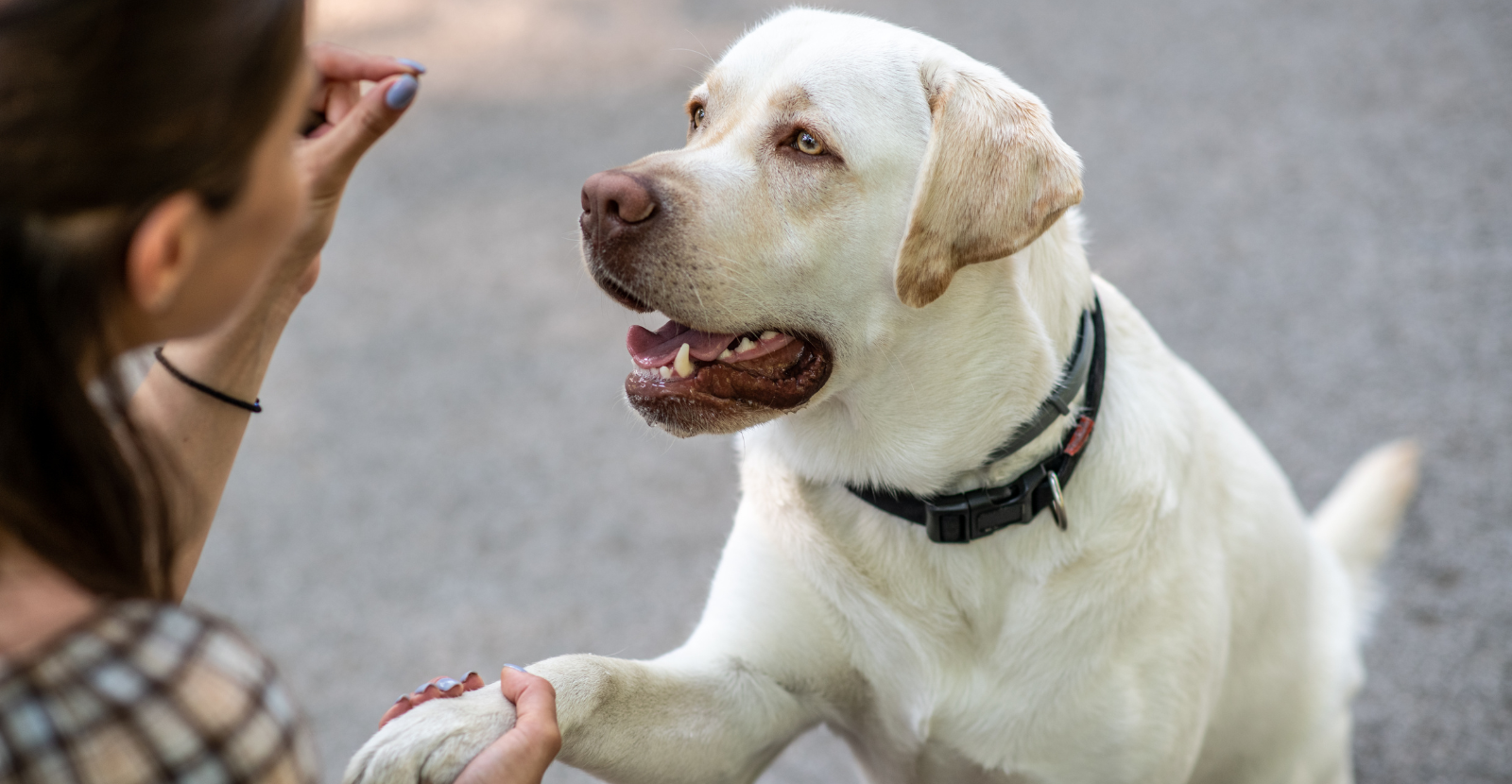Every month, we will highlight a popular dog breed at risk for arthritis. We will talk about what we love about them, as well as reflect on how to keep them healthy. This month, we are focusing on the Great Pyrenees, shortened to GP or Pyrs, as they are often called. While they are known for their large size, they are also known for their great temperament, which makes them all the more loveable. One of our own Parnell Living Science employees added one of these beauties to their family, so we have an up close, personal review of this breed. The results are here in this post and they include plenty of pictures of Great Pyrenees as well as answer questions about the breed, tips for care, and how to keep them happy and healthy even longer as they age.
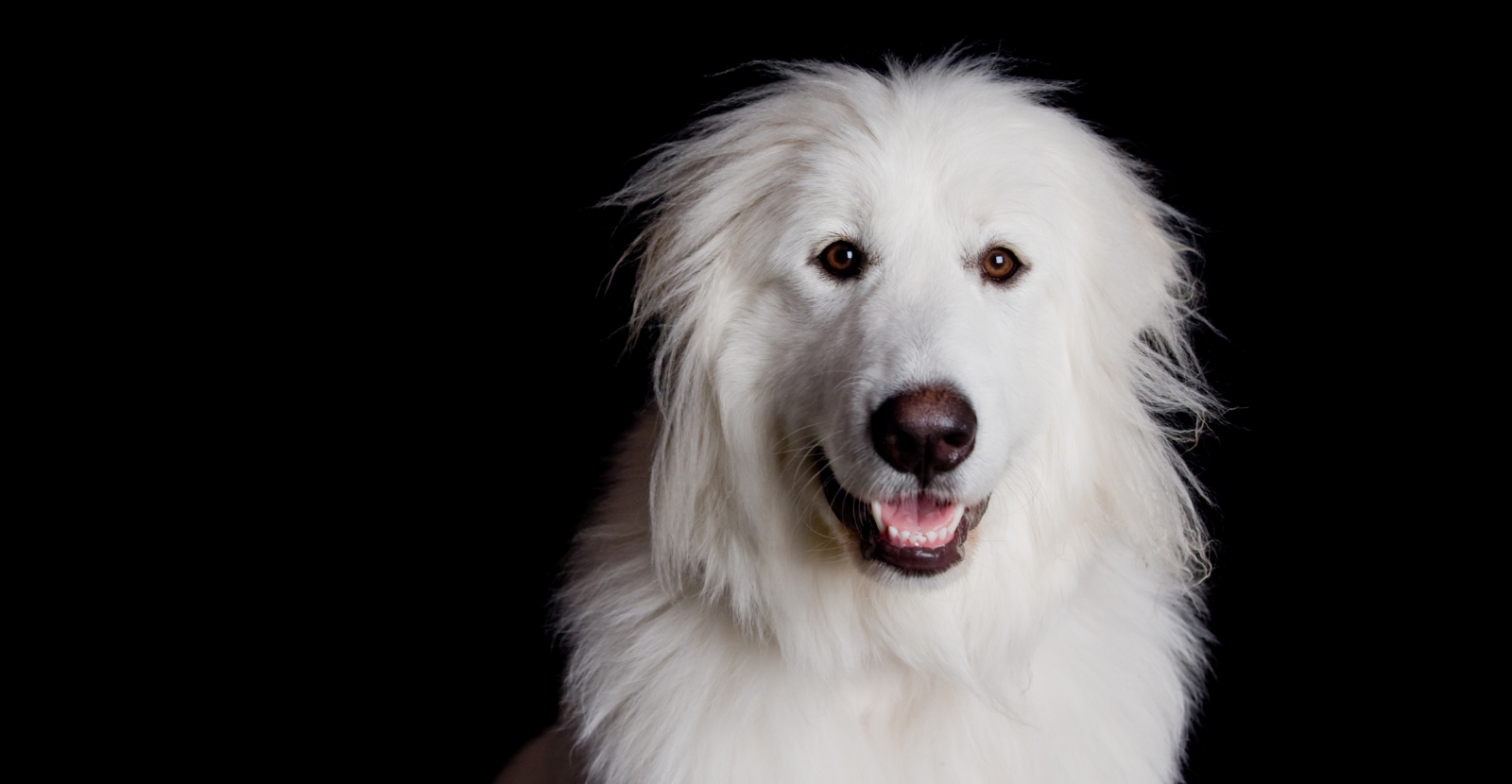
According to the AKC, the Great Pyrenees get their name from the mountain range in southwestern Europe, where they have long been used as guardians of sheep flocks. In the United States, they are called Great Pyrenees. In most of Europe, they are known as the "Pyrenean Mountain Dog." In their native country of France, they are called "Le Chien de Montagne des Pyrenees" or "Le Chien des Pyrenees." No matter the name, the GP is "a gorgeous white dog with a certain elegance." They were "discovered" by French nobility in the seventeenth century and elevated to the status of royalty in France.
The Great Pyrenees are beautiful, large white dogs, with a gentle disposition. In the AKC breed standard, the manual says "the ideal Great Pyrenees conveys the distinct impression of elegance and unsurpassed beauty combined with great overall size and majesty while also possessing a keen intelligence and a kindly, while regal, expression.” These dogs have nobility in their blood, which is why they are majestic. They are great working dogs because of their size.
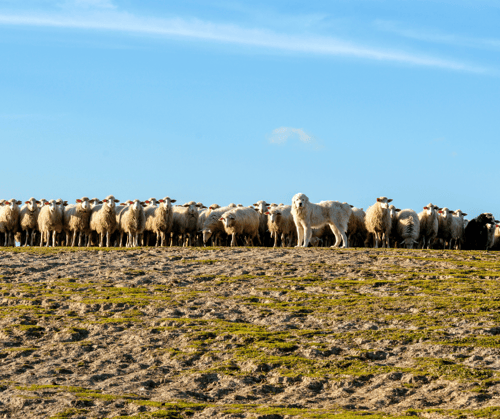
History of the Great Pyrenees
The Great Pyrenees have had a variety of jobs throughout history. They were bred for centuries to work as herding dogs and protect the natural border between France and Spain, in the mountain range they were named after. They protected herds from wolves, bears and livestock rustlers. Their courage when defending the flock was the story of legend still to this day.
In the 17th century, the Great Pyrenees became royalty when they were designated the Royal Dog of France by King Louis XIV. Then in the 19th century, England’s Queen Victoria proudly added the Great Pyrenees to her royal family. This began many years of these dogs being part of royalty, with instinctual nobility.
The GP made it through history pulling carts, guarding sheep against predators. Noble standards had them in high regard, but they still worked because of their easy temperament and large physical presence. Today, they might guard cattle on a farm, or be comfortable with a family to call their own. They were recognized by the American Kennel Club in 1933 as the 91st breed.
Breed Standards
- AKC Breed Popularity: Ranks 66 of 196
- Height: 68 – 81 cm and up (male), 63 – 73 cm and up (female)
- Weight: 45+ kg (male), 38+ kg (female)
- Life Expectancy: 12-14 years
- Group: Working Group
5 Reasons a Great Pyrenees is Your Dog Breed Match
There are so many reasons to add this beautiful breed to your home. But here are some points to keep in mind to be sure you are a good match with this giant breed of dog.
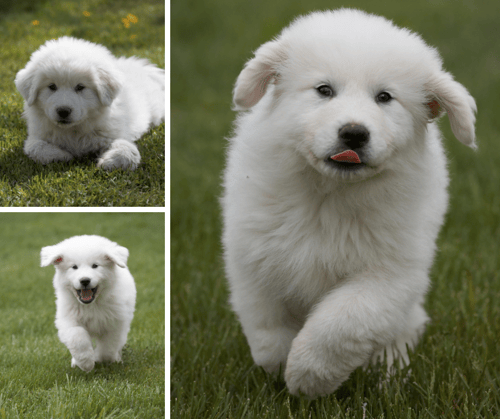
You love adorable puppies.
All puppies are cute, right? Nope, there are some breeds (which will remain nameless) that are prettier dogs than puppies. This is not the case with the Great Pyrenees. These beautiful fluffy white puppies are the softest, sweetest puppy out there. If you add one to your family, enjoy the puppy moments and just remember, they grow into very large dogs. So while it’s good to snuggle the pups, be ready for something much bigger ahead! There is a reason the GP belongs to the giant breeds of dogs.
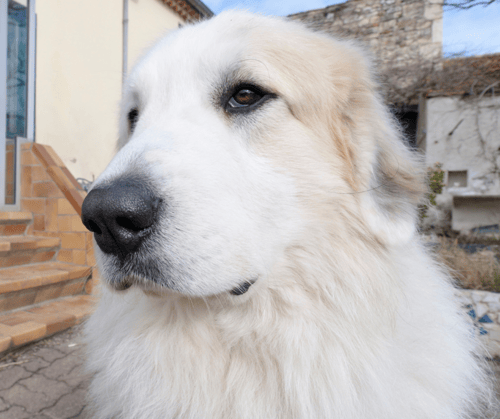
You have a lot of hair already.
Then, a bit more will not matter. Or you have no hair, so you would like some hair in the house. There really is nothing like the Great Pyrenees fur coat of hair. They have a double coat and when they “blow out” or lose some of their coat going from winter to spring, expect a lot. The key to a happy, healthy GP is taking care of their coats. No matter what, if someone says, “Just shave them in the summer, so they will be cooler in the hot temperatures.” Quickly tell them to mind their own business because you do NOT want to shave a GP! Mostly because there is so much hair. It's no small task, and it would take a lot of time, making it miserable for you and your beautiful Great Pyrenees. The good news is their hair is made to withstand winters and summers. Not surprisingly, their double coats work well in the winter. What many do not know is their coats work for the summer, too. They shed a lot in the summer, so the thicker hair will be removed on its own. The white color reflects the sun in the summer. What's left in the summer, after they shed most of their winter coat, is a more lightweight, soft hair that works as its own air conditioning.

You wear colorful clothing.
We are just guessing here, but again – white dogs with lots of white dog hair. If you wear white or light-colored clothing, it will go unnoticed. But if you have lots of black in your wardrobe, be forewarned you will have white dog hair on your clothing. All the "dog hair, don't care" memes will totally be you!
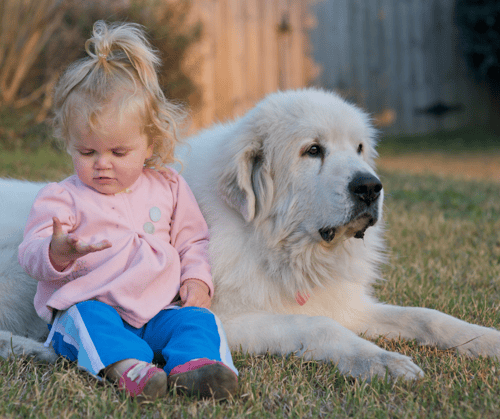
You value FAMILY.
These dogs were born to be herd guardians. This means in today’s world, they are very loyal, protective family companions. They also are nocturnal by nature, as they often watched and protected herds for generations around the clock. This makes a very protective guard dog if something should happen in the nighttime hours. While many think of these dogs as gentle giants, they will protect their family with fierce barking and growling if needed to forewarn others to stay away.
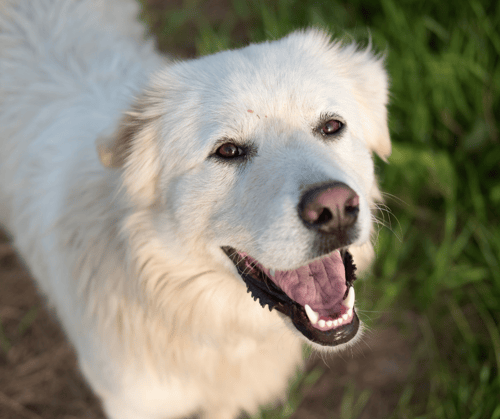
These dogs do not need a lot of space, but they need more than what is provided in a small living environment, such as an apartment. While the GPs are very good at relaxing on the couch, they do want the opportunity to have space to run. It is recommended they get at least 45 minutes to an hour of outdoor activity every day. If you have an outdoor space that can frolic from yard-size to farm-size, this will bring much joy to your GP.
The World’s Largest Dogs: Giant Breeds
When thinking of large dogs, the Great Pyrenees often comes to mind. But there are many more giant breeds and several of them are in the GP category of dog breeds. In fact, the AKC acknowledged the world’s largest dogs and our GPs made the list! Because of their size, keep in mind they need lots of room, plenty of food and are willing to give lots of love.
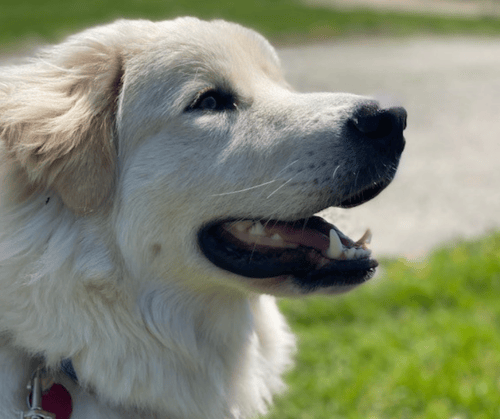
Top Health Problems of Great Pyrenees
As you can imagine, giant dogs sometimes have giant health problems. The GP’s main health issues are in part due to their size.
The unfortunate fact that really no dog lives nearly long enough, the GPs lifespan is longer than most expect, based on their size. People often ask how long the Great Pyrenees lives? Surprisingly, they are expected to only live 12-14 years. One thing to consider is the size of your GP. This dog breed, more than most, need to have key preventative measures for an active lifestyle. But first, here are the key health problems to know about when it comes to your Great Pyrenees:
- Canine Hip & Elbow Dysplasia. With most Giant breeds, there are a variety of joint issues. There will be joint problems arise, especially in the hip and elbow joints. This causes pain and impacts their mobility. It is critically important to keep their joints healthy for as long as possible.
- Osteoarthritis, or arthritis. Because of the joint problems already mentioned, GPs are at very high risk for osteoarthritis. Arthritis is as painful for dogs as it is for humans. And just like humans, there is something you can do about it. Learn more about arthritis in dogs and check out all the risk factors.
Protection and Prevention Key to Great Pyrenees Health
The health problems most encounter with the Great Pyrenees can be protected against just by planning. Here are the top ways to keep your dog healthy:
Healthy Diet for Great Pyrenees
This is said for all breeds, but is certainly true for large breeds. GPs grow fast and are at large breed status quickly. However, their metabolism slows more than most breeds and even other giant breeds. Feeding your dog an appropriate diet is very important. Obesity is a serious health risk for giant breed dogs. More so than in average-sized dogs.
Preventative Care for Joint Health:
As most of the GP’s health problems are joint-related, plan to do what you can to protect and strengthen their joints safely and naturally by adding an all-natural joint supplement to their diet. Most dogs need joint supplements by age 8, some much earlier. Since the Great Pyrenees is a giant breed of dog, consider adding joint supplements at an early age. Joint supplements can promote joint health and cartilage development which keeps dogs active and youthful, longer. Our GPs love their activity and if their joints start to decline, they might show signs of depression. It is of utmost importance to keep your GP's dog's joints healthy! We know just the joint supplement that will do just that.
Glyde® Mobility Chews
Parnell Living Science is the experts on osteoarthritis (OA) or arthritis in dogs. Our unique formula has the key anti-inflammatory ingredients needed to combat the signs of aging. Glyde uses natural, gluten-free ingredients to promote healthy joints for dogs so they are able to do everything he or she loves to do! Glyde is the only nutraceutical that contains proven levels of three key components that work to relieve the painful signs of arthritis.
Glyde's proven formula has all-natural ingredients and high levels of glucosamine and chondroitin, plus Green Lipped Mussel (GLM). The proven levels of these key ingredients are what makes the formula unique:
- New Zealand Green Lipped Mussel (GLM): A powerful anti-inflammatory
- Glucosamine: Reduces cartilage degradation
- Chondroitin Sulfate: Helps rebuild cartilage
Meet Tiberius
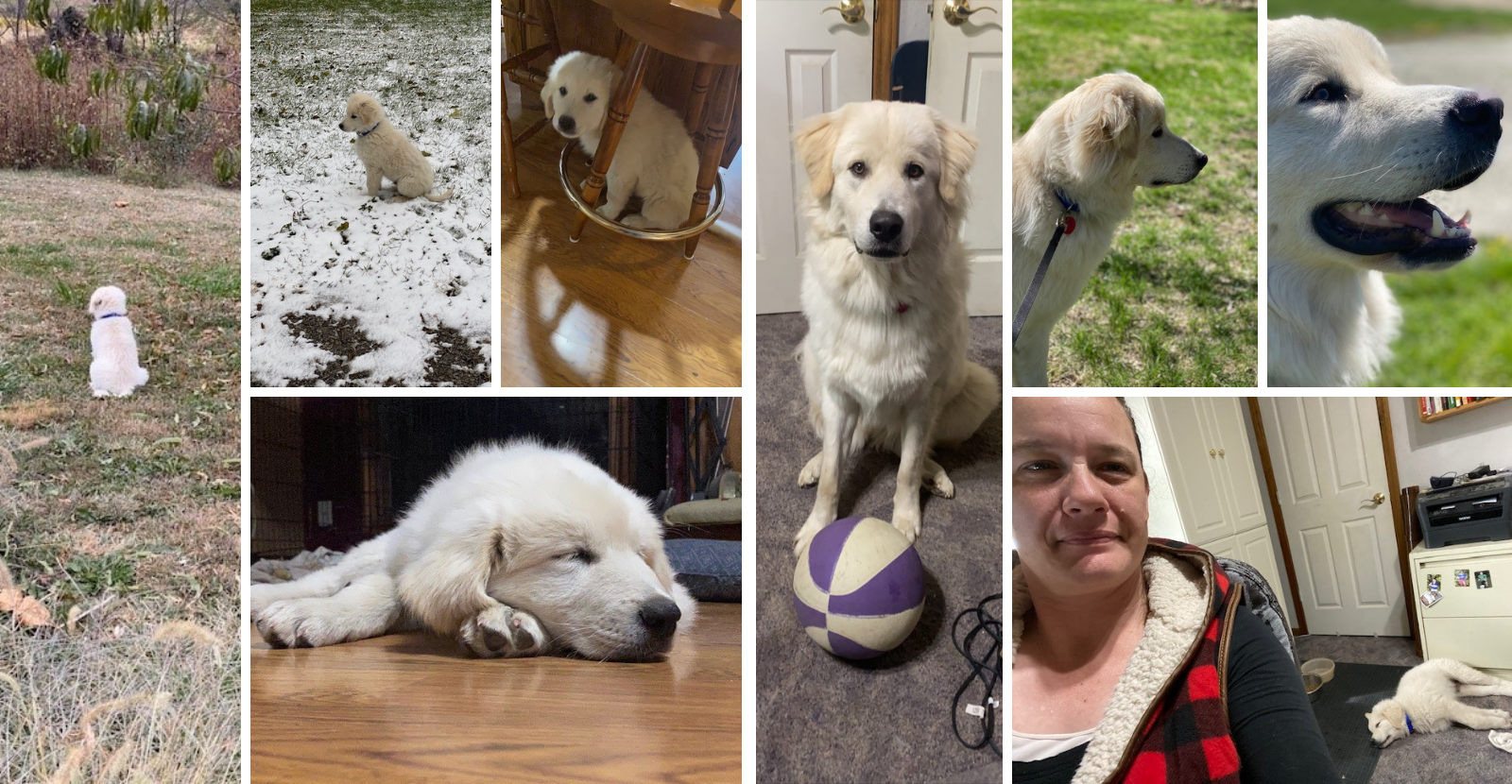
We mentioned earlier how Parnell Living Science has an employee who added a beautiful Great Pyrenees to her family! Meet Tiberius, or Ty, as he is known at his household. Erin was excited to add this beautiful dog to her family. Here is some of the advice Erin gives to those considering getting a GP of their own:
“Those of us with Great Pyrenees understand what they are getting, but some people do not. You may not realize how big they are going to be. Many think they will be big… just not that big!” she said.
“Joint care preventive is important for these gentle giants, both the couch potatoes and the LSG (Live Stock Guardian) dogs. People who have this breed as a working dog also understand the need for good joint health to ensure their dogs are at top performance to do their jobs!"
"Key advice: The coat is where it is at. The white coat of the GP is a very recognizable trait. These guys already have super soft fur, people can’t believe how soft Ty’s coat is when they pet him, it’s thick and does require some maintenance. When they “blow their coat” (or shed), it looks as if there are 3 extra dogs laying on the floor! It’s important to support their healthy coat because regrowth is important too. Their fur keeps them cool in the summer and warm in the winter when they love to lay out in the snow.”
Remember when we mentioned how big the Great Pyrenees gets? Erin's dog went from this as a puppy:
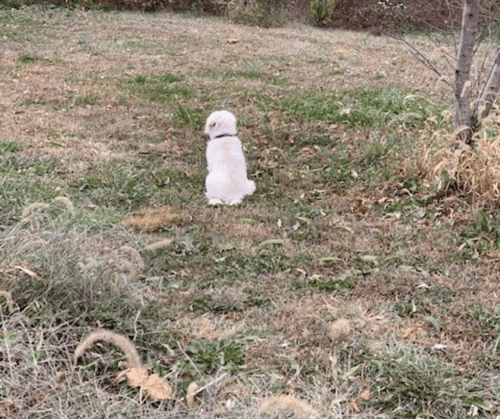
To this dog in 7 months!
.png?width=500&name=MicrosoftTeams-image%20(1).png)
No matter what, remember your sweet, loyal, beautiful Great Pyrenees offers lots to love. Keep them happy, healthy and well-loved now for an even longer, active life.

